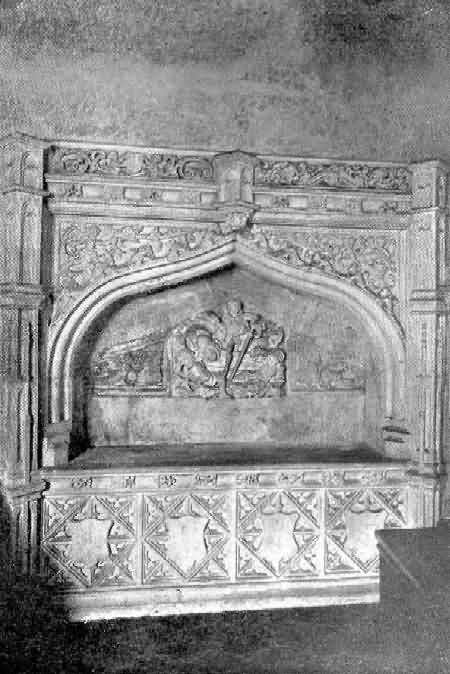
«SOME OLD DEVON CHURCHES» BY JOHN STABB; 121-132
Holcombe Burnell [121]; Holcombe Rogus [122]; Hollacombe [123]; Holne [124]; Holsworthy [125]; Honeychurch [126]; Honiton [127]; Huish, North [128]; Huxham [129]; Iddesleigh [130]; Ilfracombe [131]; Ilsington [132].
HOLCOMBE BURNELL. St. John the Baptist. The church consists of chancel, nave, north aisle, south porch, and west tower with four bells, with the following inscriptions:— (1) Soli Deo Detur Gloria. T. P. 1636; (2) Plebs ois plaudit ut me tam sepius audit; (3) Est michi collatum Ihs istud nomen amatum; (4) Robert¾Church¾Wardens J.P.¾1654.
On the north side of the chancel is an object of great interest: the Easter Sepulchre [plate 121]. It is in a remarkably good state of preservation, the carving of the Resurrection at the back being almost perfect. The figure of our Lord is just emerging out of the tomb, His left leg inside, and His right foot resting on the knee of one of the sleeping soldiers outside; His left hand holds a staff with a banner. The soldiers' figures are well carved, the expression on the face of the one at the left hand side of the tomb (the spectator's right) is especially good. On each side of the central carving their are mermaids holding shields without coats of arms. On the lower part of the tomb are four larger shields, also blank. On the left side over the arch is a merman holding a scroll; on the frieze are naked figures of boys playing with fish; on the ledge beneath the shelf is carved an anchor. It would almost seem as if it was the tomb of someone who had been connected with the sea. It is supposed that one of the members of the Dennis family was buried here. Lysons [says], "The Dennis's of Holcome Burnell were descended from Thomas Dennis, Esq., of Bradford, by a second wife. After a continuation of five descents at Holcome, the co-heiress of the Thomas Dennis, who married a daughter of the Marquis of Winchester, married Sir Henry Rolle, and Sir Arthur Mainwaring. Sir Thomas Dennis, grandfather of the last Sir Thomas Dennis of Holcombe, was Sheriff of the County, seven, or according to Sir William Pole, nine times."
The altar is a handsomely carved oak chest which came from Culver House. In the chest is preserved an old altar cloth, the cloth itself is comparatively modern, but it is enriched with fleurs-de-lis and angels, which were most probably taken from a pre-Reformation cope, or chasuble. The angels bear a striking resemblance to those on the chasuble which has been lately restored to Barnstaple Church, and which was referred to in an inventory of church goods made in 1560.
The church retains its old box pews, and there are some old bosses in nave and aisle; those over the chancel are coloured and gilt. The tower is cut off from the nave, and the organ is placed across the tower arch. On each side of the organ is preserved all that remains of the rood screen, consisting of 8 of the lower panels, with paintings, 4 panels on each side of the organ. On the left side are:— (1) St. Catherine, with her wheel; (2) St. Barbara, with the tower; (3) St. Margaret, with dragon; (4) problematical, may be St. Thecla. On the right hand side of the organ are:— (1) St. Nicholas in mitre with nimbus behind; (2) St. John the Baptist, with Agnus Dei resting on a book; (3) the Angel Gabriel holding a scroll inscribed "Ave Maria Gratia Plena"; (4) the Blessed Virgin kneeling at a desk with her hands clasped on her breast; a dove is approaching her lips, and near her is a flower pot holding a lily.
The font is old, the sides of the bowl are carved with geometrical patterns, there is a blank shield beneath the bowl, and the shaft is ornamented. There are 10 sides to the bowl, a rather uncommon number. The south doorway has a band of carving over the arch, with a human head in the centre and at each end. In the churchyard is a shaft of stone, apparently the remains of an old cross.
The registers date from 1657.
HOLCOMBE ROGUS. All Saints. The church consists of chancel, nave, north and south aisles, south porch, and west tower. The capitals of the pillars on the north side of the nave are carved with fruit and grotesque heads, those on the south side are plain; in the west pier on the south side there is an image niche with the figure missing. The north aisle roof is cradle shape, well carved, with rich bosses and wall plate, and with angel figures supporting the beams. The south porch has a groined stone roof; the corbels of the outer doorway are said to be carvings of Edward III [r. 1327-1377] and Queen Philippa [his wife].
The rood screen is gone, but the upper doorway of the staircase remains; the lower has been walled up.
The Bluett pew [plate 122] which occupies a prominent position in the north aisle, and measures 18ft. 8in. by 10ft. 10in., is well worthy of notice. It is surrounded by a Jacobean screen, surmounted by a cornice of medallions elaborately carved with Scriptural subjects, depicting scenes from the Creation to the delivery of the Law on Mount Sinai. Inside the pew, on the north wall, is a monument, with a bas-relief of the Good Samaritan, in memory of the Rev. Robert Bluett, dated 1749. On the north side of the chancel is the Bluett Chapel, containing two fine monuments. The one to the west is that of Sir John Bluett, and wife Elizabeth. He is arrayed in full plate armour, the hands raised in prayer, the hair is long, and he wears a moustache and peaked beard, the head resting on a cushion and the feet on a squirrel. Slightly above him rests his wife, she is arrayed in close-fitting bodice with very full sleeves tied in at the elbow, and full skirt; her feet rest on a dog, and her head, with curly hair, rests on a cushion. At the base of the monument kneel their eight children, all apparently girls, four of them holding skulls in their hands. At the back of the tomb is an inscription in Latin of which Mr. Ashworth gives the following translation:— Sacred to the memory of the truly noble and high born man, John Bluet, Knight, and his most distinguished wife, Elizabeth daughter of John Portman, a soldier and baronet.
"He indeed died November 29th aged 31, and of salvation 1634
But she July 7th aged 32, and of salvation, 1636.
Whoever thou art that approachest to gaze
Be not sparing of thy tears, lest the stone put thee to shame
Moisture exudes from the stones, and they oppressed with sorrow
Declare that they can scarcely endure the burden
They hide a noble pair, not more noble than their race.
How great a lustre was shed on the good deeds of both!
Those whose spirits love united with a bond of piety
The joys of eternity now crown."
The second monument is in memory of Richard Bluett, and Mary his wife. She is arrayed in ruff, tight-fitting bodice, and flowing skirt, very full at the hips; he wears a skull cap, ruff, gown, knee breeches, and shoes with rosettes. On the tomb are the following inscriptions:—
Memoriæ sacrum
Mary ye only wife of Richard Bluet of
Holcombe Rogus, Esq, ye daughter of Sir John
Chichester of Rawleigh, Knight, and sister to ye
Right Honble ye Lord Chichester, Lord Deputy
of ye Kingdome of Irelande―who had issue
6 sonnes viz; Arthur, Roger, Walter―
Charles―Francis―and Charles ye younger
And five daughters―Gertrude―Amey―
Joane―Anne―and Dorothy―She departed
this life ye eleventh day of Februarie 1613
Being of ye age of 65 yeres.
¾¾¾¾¾¾¾¾¾¾¾¾
To the dear virtuous memorie of Richard Bluet,
late of Holcombe, Esq, who deceased the 3rd
of March 1614―and lieth here interred.
"Nor goodness, nor desert, must hope to have,
A priviledge of life against the grave,
For those lie here intombd: Death did his best
It changed but houres of Toyle for houres of Rest;
Which this good man hath found. His faith made way
To Heaven before: His workes still day by day
Now follow him, Such Grace doth mercye give,
As who lives well to Dye, Dyes well to live."
¾¾¾¾¾¾¾¾¾¾¾¾
Nascendo c moriur moriedo renascimur
¾¾¾¾¾¾¾¾¾¾¾¾
A
modest matron here doth lye | Ye
Poor she often would relieve | |
"Vixi in ereto morior in potu." |
The Bluett family resided at Holcombe Court. Sir William Bluett, Knt., came over with the Conqueror [r. 1066-1087].
The registers date from the year 1540.
HOLLACOMBE. St. Petrock. The church [plate 123a] consists of chancel, nave, south porch, and west tower with three bells.
The two principal features of interest in this church are the saddle-back tower [plate 123b], in which style there are only two or three instances in Devonshire, and the Sanctus bell turret over the chancel, which is also rarely found. There are the remains of a piscina in the chancel, and close to the chancel is preserved an old font with an octagonal bowl with circular basin roughly carved out, it stands on a modern shaft. There is another font to the west of the south door with a square bowl resting on clustered pillars and a modern plinth. The east window is filled with stained glass representing the Nativity and the Adoration of the Magi, and is memory of D. L. Meyrick, Rector of Holsworthy, who died May 13th 1819, aged 80. The reading desk has some old baluster rails in front, and there are some inserted in the belfry screen.
The registers date: baptisms, 1638; marriages, 1640; burials, 1638.
HOLNE. St. Mary. The church [plate 124a] consists of chancel, nave, north and south aisles, north and south transepts, south porch, and embattled west tower with five bells. It was probably erected towards the end of the 13th century.
There is a fine Perpendicular rood screen. The groining is gone and the spandrels are filled with fragments of the old carving. There is a good cornice of vine leaves and grapes with the cresting missing. The doors remain, but the loft staircase has been blocked up. The lower panels contain paintings, including St. Matthew, St. Luke, St. John, St. Peter, St. James the Great, St. James the Less, St. Philip, St. Matthias, St. Simon, St. Jude, St. Mary Magdalene (with box of ointment), St. Jerome (as a cardinal), Pope Gregory (with triple crown), St. Ambrose, St. Augustine, St. Sebastian, St. Thomas of Canterbury, St. Cecilia, St. Roche, St. Apollonia, St. Dunstan, and on the central doors the Coronation of the Blessed Virgin; this subject will be found at Portlemouth and Torbryan. The screen retains its ancient colour and is thought by the Rev. S. Baring-Gould to have been erected by Hugh Oldham, Bishop of Exeter 1504-1519.
The pulpit [plate 124b] is of the same date as the screen, 1504-1519, and was probably erected by the same bishop. It is elaborately carved and divided into eight compartments by eight crocketed and finialed ogee arches; there are slender buttresses separating the arches, and on the tops are the figures of eight lions. In each compartment there is a shield of arms. Here will be found the arms of Buckfast Abbey [founded 1018; re-established 1136; suppressed 1539; re-founded 1882], the arms of Lacy [elected Bishop of Exeter 1420], and one commemorating the marriage of William Bourchier with [Thomasine] the heiress of Hankford.
Near the screen is preserved a font [plate 124c] said to be the one in which Charles Kingsley was baptised, his father, at the time of his birth, being curate at Holne. It seems doubtful if this is really the old font belonging to the church, as for a long time that was missing from the church and another was in use. When search was made to see if the old font could be found anywhere in the neighbourhood, a circular bowl of granite was found in a farmyard, and it was taken for granted that this was the ancient font, but there is more than a possibility of its being the base of the old churchyard cross, with the hole for the socket enlarged to make it suitable for a drinking trough.
In the north transept is a window to the memory of Charles Kingsley [1819-1875; author of The Water Babies], representing the offerings of the Wise Men, with his portrait at the top.
The altar table is of carved oak from the roof of Dartington Hall.The last rector was John de Wyteby, 1310; since his time the living has been a vicarage.
The registers date: baptisms, 1603; marriages, 1653; burials, 1618.
HOLSWORTHY. St. Peter and St. Paul. The church [plate 125a] consists of chancel, nave, north and south aisles, south porch, and west tower with eight bells. The chancel roof has carved bosses and corbels carved with angels. There is a priest's door in the chancel. The Perpendicular tower dates from about 1450, the chancel was rebuilt in 1882. The pulpit in use is modern, there is another with painted panels at the west end of the church. There are a few old tombstones, one in the south aisle is dated 1691.
There is a good piece of old stone carving [plate 125b] preserved on the west wall of the porch representing the Agnus Dei. I can obtain no information as to its original position.
The registers date from 1563.
HONEYCHURCH. St. Mary. The church [plate 126a] consists of chancel, nave, south porch, and west tower with three bells. The east window has a wooden frame and is not of ecclesiastical design. On the south side of the chancel is a narrow window with very deep splay. The communion rails are of the baluster type and there are the remains of a dwarf chancel screen in the same style. There are two windows on the south side of the nave, one of three lights and one of two; on the north side there is one window of three lights containing small remains of ancient glass.
In the north wall near the chancel arch is a small walled up window, or image niche, and suspended above are the arms of George III [r. 1760-1820]. There are some very old benches [plate 126b] some with carved ends but not of elaborate design.
The font [plate 126c] is of Norman date, a square top, rounded at one corner, and shaft resting on plinth; on the north side of the shaft is carved zigzag, on the east and south sides cable moulding.
The roof of the chancel is plain plaster, that of the nave has carved bosses, ribs and wall plates.
On the north wall is an old painting partly cleared from limewash, it has an inscription of which the following words can be read:— "Elizabeth Regina . . . . God save the church, our Queen and nation."
In the churchyard is a small portion of what was probably the old cross. The entrance to the churchyard is by an iron gate erected in memory of the Jubilee 1887-1889.
The registers date: baptisms, 1728; marriages, 1757; burials, 1730.
HONITON. St. Michael. The church is cruciform in shape and was erected about 1480, the aisles were added later, in 1529, the chancel was partly rebuilt at the same time. Round the pillars of the church runs an inscription asking for the souls of John and Joan Takell who restored the chancel. On the floor of the north aisle is the tombstone of Joan Takell, 1529.
The western tower, containing five bells, is thought to have been erected by Bishop Courtenay of Norwich [elected 1413], it is believed he also erected the rood screen. An old record says, "Peter Courtenay built good part of this church, which in his days was made from a little chapel into a handsome parish church, and the arms of his family are in the pillars of the church; he likewise in all probability made a curious skreen of fine workmanship, that is between the body of the Church and the chancel. He also built the tower, as his father's arms impaled with those of his mother in the tower window do show."
The aisles have old cradle roofs with good bosses. From the angle piers of the transept crossing spring four large oak ribs with coloured bosses. Possibly these were intended to support a central tower. The chancel and its aisles have Perpendicular piers, and on the central capitals are ribands with the inscription:— Pray for ye soul of John Takell & Jone hys wyffe.
The rood screen of eleven bays is 46 feet in length and extends across the chancel and aisles [plate 127]. The tracery of the arcades shows the tilting shields between the cuspings. The groining, cornices and the three sets of doors remain. The screen was restored in 1880, when a panel bearing the arms of George II [r. 1727-1760] quartered with those of France and Hanover were removed and is said to have been taken to Exeter.
There is a marble tomb containing the remains of Thomas Marwood who «practised physick in the Reign of Queen Elizabeth» having the following inscription:— "Here lieth the body of Thomas Marwood Gent who practised physick and chirurgery above seventy five years, and being zealous of good works gave certain houses and bequeathed by his will to the poor of Honiton ten pounds, and being aged above one hundred and five years, departed in the Catholick Faith September 18th. Anno Domini 1617. Here also lieth Temperance the Wife of the above said Thomas Marwood Who dyed the 9th of October Anno Dni 1644." Marwood became famous in consequence of his having cured the Earl of Essex [1566-1601] of a complaint that afflicted him, and for this he was given by Elizabeth [r. 1558-1603] an estate near Honiton.
The registers date: baptisms, 1562; marriages, 1598; burials, 1562.
HUISH, NORTH. St. Mary. The church, which was consecrated on June 15th 1336 by Bishop Grandisson, consists of chancel, nave, south aisle, north transept, and west tower with spire, containing five bells. The original stone altar slab is still in the church, and at the east end of the aisle are the remains of a fine screen [plate 128a]. It consists of four bays, and the central doorway which retains the doors. The groining is gone, and the spandrel spaces are plain, but there is some good carving carried up the centre from the caps of the pillars which supported the groining. There is a double row of cresting and modern cornice. The lower panels have been taken out, but the tracery remains.
The granite font [plate 128b] is dated 1662, but this is not necessarily the date of making the font, as during the Commonwealth [1649-1659] the fonts were often removed from the church, and when they were replaced at the Restoration [1660] the date of such replacing was often carved upon the font. This is the only dated font I have seen in Devonshire, with the exception of that at St. John's-in-the-Wilderness, and that I do not think is a genuine date.
The churched was restored in 1884-85 at a cost of £600.
The shaft of the old cross is built up in the lychgate.
The registers date from 1656.
HUXHAM. St. Mary. This small church consists of chancel, nave, and south porch. The nave has been rebuilt, but the chancel is old. There is a piscina in the south wall of the chancel, and some small remains of old glass in the north and south windows. The chancel screen [plate 129], of 15th century pattern, consists of a broad doorway with one bay on either side; the lower panels are enriched with linen-fold carving.
The font is Norman, and is apparently of red sandstone; there is a band of carving round the top, a fluted bowl, and cable moulding; it stands on a modern base.
The registers date: baptisms, 1667; marriages, 1682; burials, 1678.
IDDESLEIGH. St. James. The church [plate 130] consists of chancel, nave, north aisle separated from nave by two, and from chancel by one arch supported on granite pillars, south porch, and west tower with four bells. In the chancel is a piscina with drain and two small incised crosses at the left hand corner. There are gilt bosses in the chancel roof and the wall plate rests on angel corbels, the figures bearing shields with the emblems of the Passion. In the north wall of the aisle, beneath an arch, is the figure of a knight with crossed legs, the left arm, placed across the breast, rests on a shield. The monument is supposed to be in memory of an ancestor of Sir John Sully who owned property in the neighbourhood in the reigns of Edward I [1272-1307] and Edward II [1307-1327]. The date is about 1250.
At the east end of the aisle in the south corner is a piscina. On the north side of the chancel there is a slate stone with the figure of a female in hooped dress, with a smaller figure at her side and bearing the inscription:— Here Lyeth the body of Wilmot the wife of Walter Veale Rector of Monk Okehampton who was buried the 10th day of August Anno Domi 1681. Also here lyeth the body of Hannah their daughter who was buried ye last day of October anno Dom 1681.
"Thou sayst wee're dead mayst not be Rather sayed
That as a sundered clod is peece meale layd
Not to be lost but by the makers hand
Repolished without error then to stand
So though our bodyes be resolv'd to dust
Yet at the Resurrection of the Just
Raised and rejoined more celestial
Shall bee than Angels for they could fall
Thus after timely sleep which though callst Death
Wee've life again more permanent than breath."
In the north aisle there is an old screen consisting of three bays of four lights, with a modern cresting. There is an old carved pulpit and an old octagonal font. In the tower is a tablet with the inscription:— Here lieth the Body of Walter Veale Rector of this Parish who dyed the X day of April 1689 Aet Suæ 71. and also the Body of Elizabeth his wife who dyed the 26 of June 1692, Aet suæ 65.
"Here Christian people lies their sacred dust
Who loved the conversation of the Just
In Faith, Hope, Love and all that is Divine
To this dark world their heavenly light did shine
Walk in their virtuous steps and thou shalt be
Happy with them to all Eternitie."
Another inscription in the tower is:— In Memory of William Mallet Esq. of Ash who was buried near this place the 2nd of June 1776, aged 70. Also of his eldest son William Mallett, buried the 5th of May 1781, aged 35.
The nave and aisle have carved bosses and wall plates.
The registers date: baptisms, 1541; marriages, 1566; burials, 1555.
ILFRACOMBE. Holy Trinity. The church [plate 131] consists of chancel, nave, north and south aisles, north and south porches, and tower, rising from the middle of the north aisle. Most of the walls of the church have been partly rebuilt during the past 60 or 70 years; in 1864 the eastern part of the south wall was rebuilt. In 1861 the new chancel roof was erected, when it was found that the east wall was not square with the other walls, so the greater part was taken down and rebuilt. The tower is in three stages, 58½ feet high, with modern battlement. The old pews were removed in 1857. In 1899 the carved work in the roof was restored, and dormer windows inserted in the roof. In 1905 the chancel roof was panelled with carved oak. The rood screen is gone, and the staircase was removed in 1864, when the south wall was rebuilt. The font is one of the few remaining relics of the old Norman building. When the church was restored in 1861, the font having been injured by frequent removals to different positions, was cut down to its present size, and the bowl was filled in, leaving only a shallow round basin. The carving was re-cut from the old design. The nave roof springs from curious corbels; carved wooden figures of ecclesiastics resting on stone brackets supported by grotesque animals.
The registers date from 1567.
ILSINGTON. St. Michael. The church consists of chancel, nave, divided from aisles by arches springing from slender clustered column, north and south aisles, north and south transepts, south porch with parvise, and west tower.
There is a piscina in the chancel, and another in the south transepts, the priest's door is in the south chapel. There is an old rood screen [plate 132] enclosing chancel and chapels, consisting of eleven bays, five across the chancel, and three across each chapel. The groining is gone, and spandrel spaces have been filled in with modern carving. There is a good cornice with modern cresting on the nave portion; the cresting is missing from the parts of the screen across the chapels. Modern carved angels have been placed on the caps of the pillars that supported the groining, and quite recently a cross has been placed over the centre doorway. The doors remain, and the entrance to the rood staircase in the south chapel, but the upper part of the stairs have been filled in; the lower panels are plain; there were at one time paintings of saints, but these were removed prior to 1855.
In the north transept, beneath an arch, is a recumbent female figure, said to be that of a member of the Dinham family. The effigy, which probably dates from the 13th century, is arrayed in long gown, mantle, and veil. The arrangement of the roof over the rood screen should be noticed; there are some good bosses, and instead of the arch of the nave arcade being solid above the wall plate, as is usually the case, it is open, and the roof is continued through to the transept on each side; the ribs of the roof at the four corners rest on corbels ornamented with carved wooden niches, containing figures of ecclesiastics holding staffs, books, and musical instruments. The reading desk is formed out of an old prie-dieu, or some old bench-ends, the poppy-heads and the panels are very good; these ends and some at Atherington are, I believe, the only examples of 15th century poppy-head bench-ends in any of the old Devonshire churches; they form quite the most interesting feature of the church. The font is octagonal in shape and plain, and does not call for much remark.
Over the lychgate, at the west end of the churchyard, there was formerly a chamber used as a parish school; in the parish registers under date September 17th 1639, there is an interesting entry referring to this room. It seems that there were generally about 30 boys in this school, but on Tuesday, September 17th 1639, being a wet day, there were only about 17 boys present in the school, with the master, when about 11 o'clock a woman, passing through the gateway underneath, let the heavy gate fall to:—
"Before she was gone to a house about six yards from the place, part of the south stone wall, which bare up the timber worke of the roofe slidd away, so that the whole roofe spread abroad, drove out both side walls, east and west, and fell downe uppon the flower of the roome, not one stick, stone or pinn, of the whole structure remaining where it was formerly placed. The schoole door which opened to the inside was shutt when the house began to fall. Fower of the scholler boyes fell downe into the church-yard with the east side wall, and escaped with little hurt. One ran into the chimney, where he continued safe. Some were stricken down with timber and stone which fell from over their hedde. The timber locked one boy fast in the middle of the roome, and when it was lifted up, he rose and ran away. And which was yet more wonderful, another sweet child, called Humphrey Deyon, fell out with the east side wall into the street, where he was close covered and buried under the rubbish, soe that noe pt of his body or clothes appeared; there he lay for a quarter of an howers space or more. At length, perceiving that the child be wanting, a stricter search was made among the lomber which fell into the roome; then searching amongst the rubbish which fell into the street, he was there happily found, and taken up for dead, in the judgement of all that beheld him. But he was not utterly gone, the child recovered life, is healthy and well, and free from any griefe. In this ancient and special demonstration of God's providence and goodness, in delivering from imminent danger, twelve had their heads cut and broken, so that they bledd, for it to mind them all of the danger they were in, but God with a guard of Angels surround them, so that not a bone was broken, nor a joynt displaced, their wounds are all healed, and there is not any member of them in any way infected from doing its proper office as in former time. At the writing hereof they all in health and so living to praise God for this deliverance."
This year (1910) a new room has been built over the lychgate, it is hoped it will meet with a better fate than its predecessor.
Dr. Oliver gives the first rector as Peter de Cornu, 1309.
The registers date: baptisms, 1558; marriages, 1559; burials, 1558.

Holcombe Burnell: Easter Sepulchre
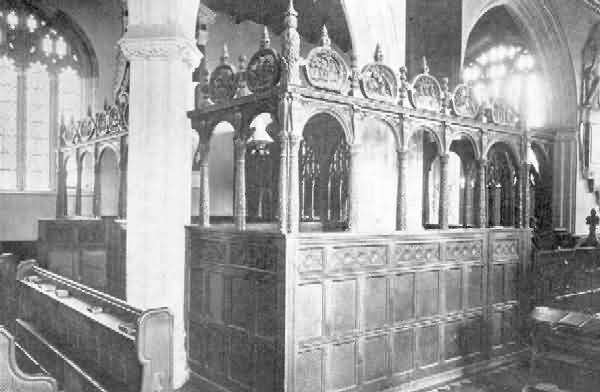
Holcombe Rogus: Bluett Pew
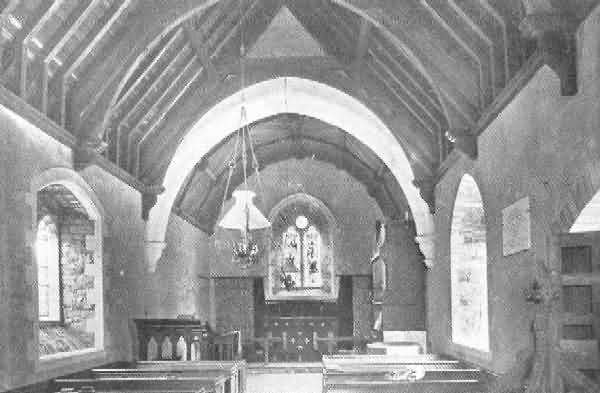
Hollacombe: Exterior
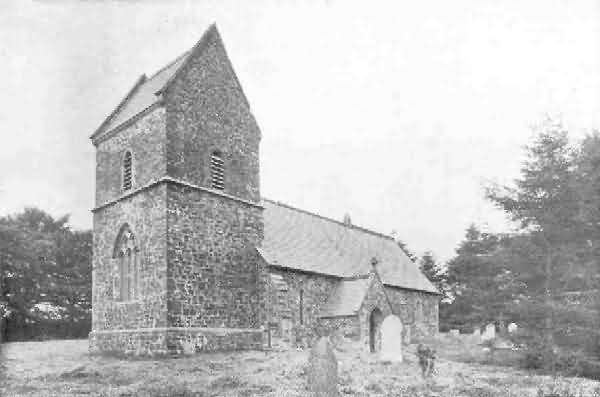
Hollacombe: Exterior
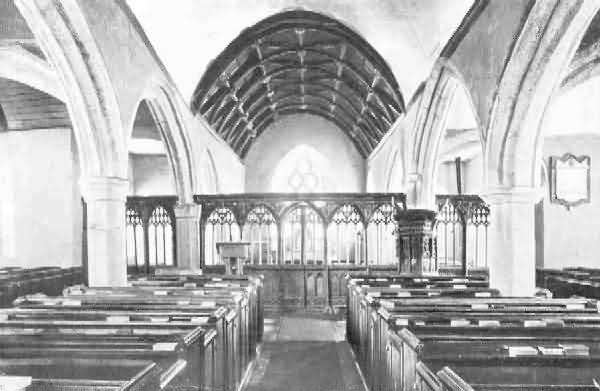
Holne: Interior
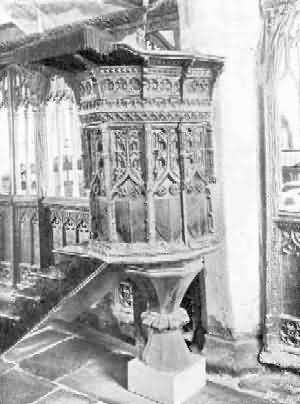
Holne: Pulpit
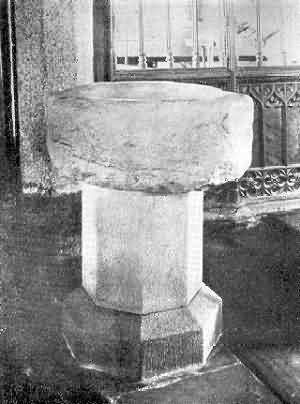
Holne: Old Font
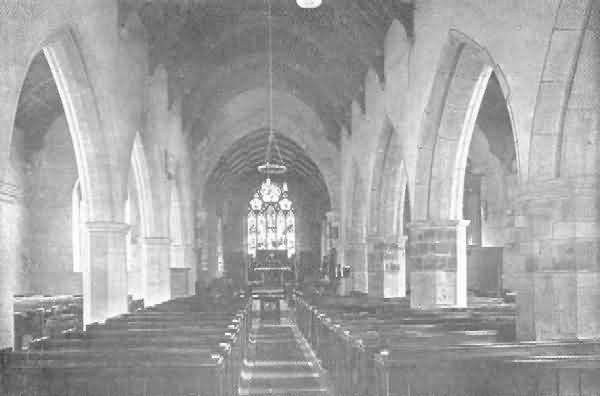
Holsworthy: Interior
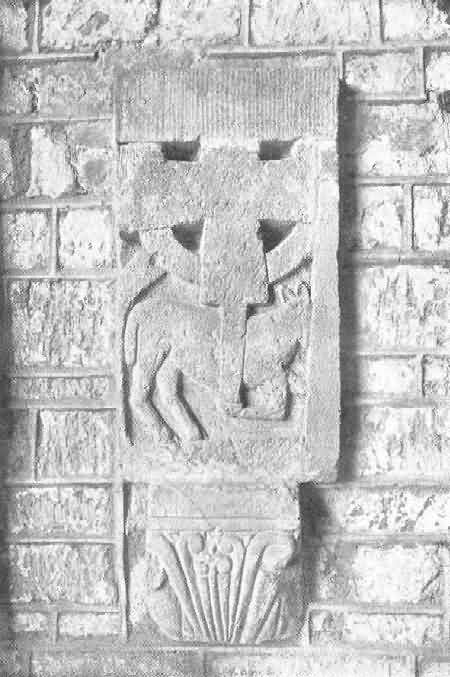
Holsworthy: Agnes Dei in Porch
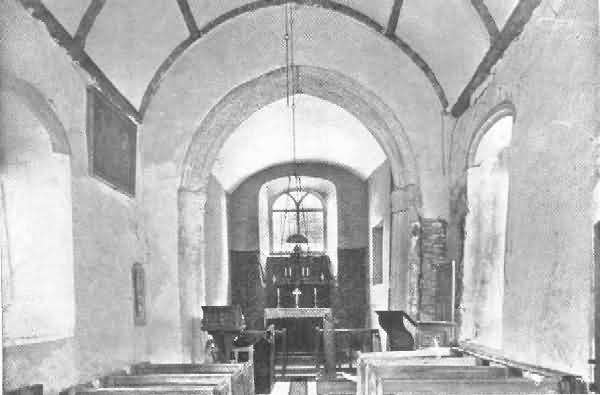
Honeychurch: Interior
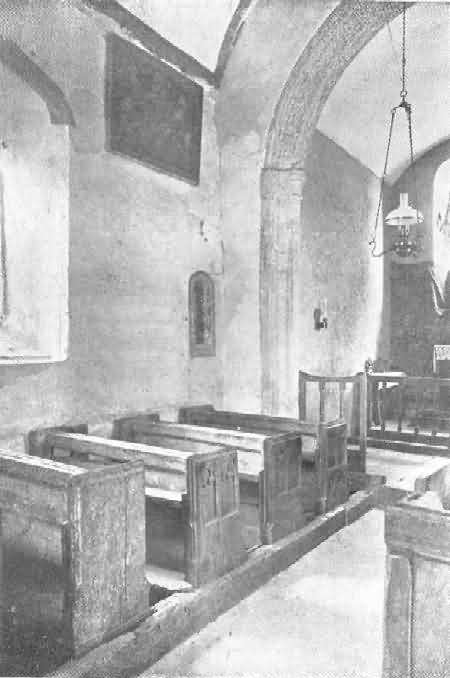
Honeychurch: Old Benches
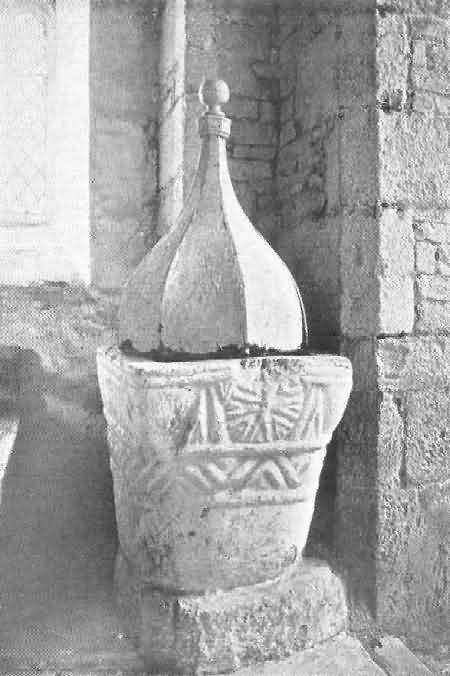
Honeychurch: Font
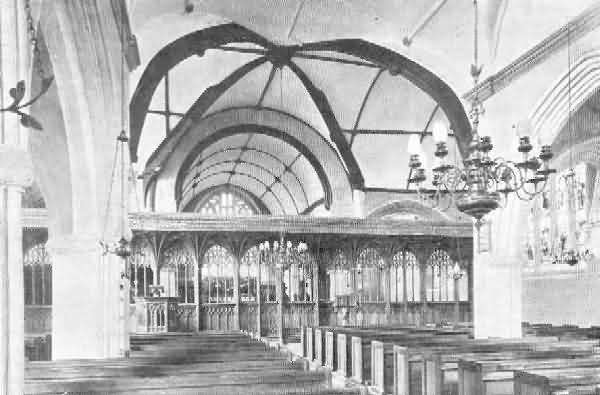
Honiton: Interior
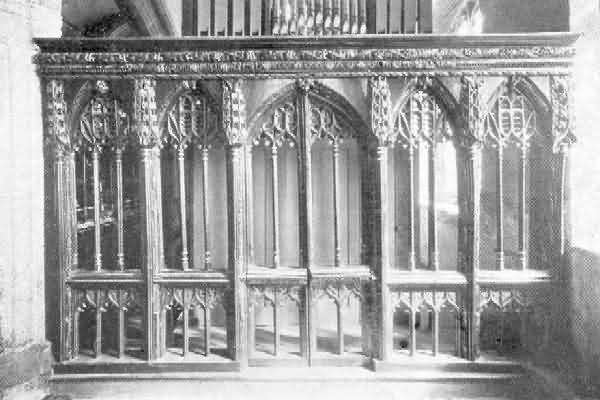
Huish, North: Remains of Screen
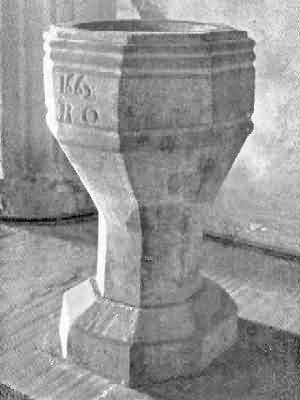
Huish, North: Font
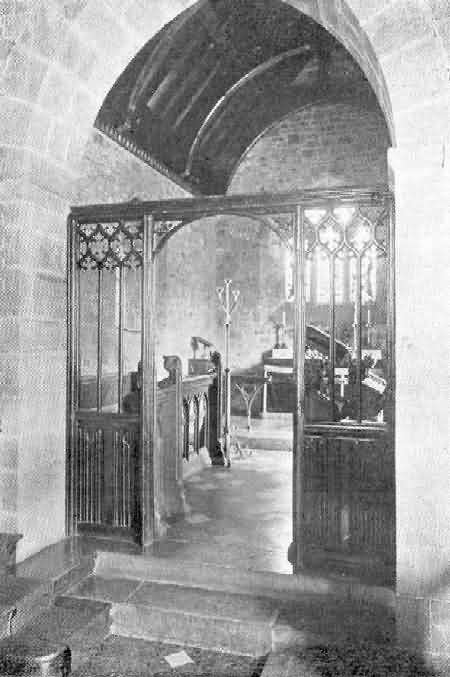
Huxham: Chancel Screen
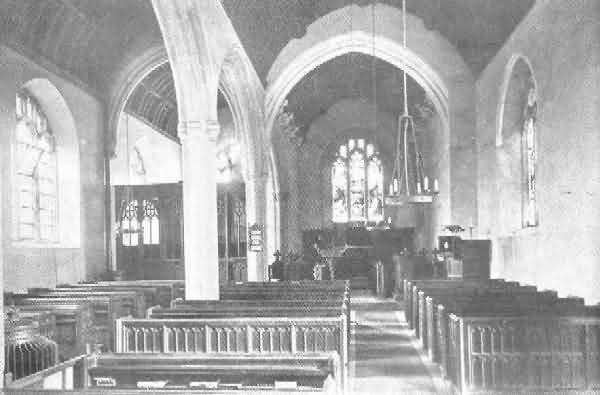
Iddesleigh: Interior
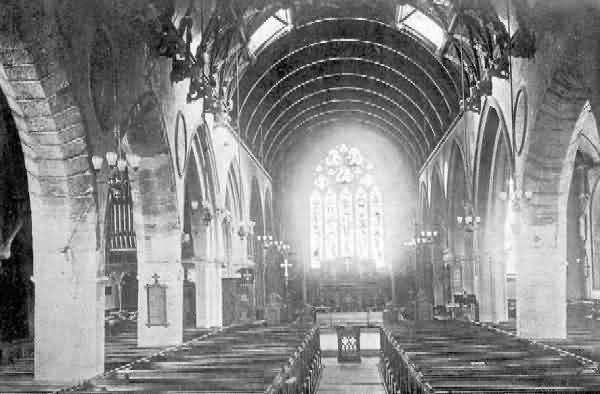
Ilfracombe: Interior
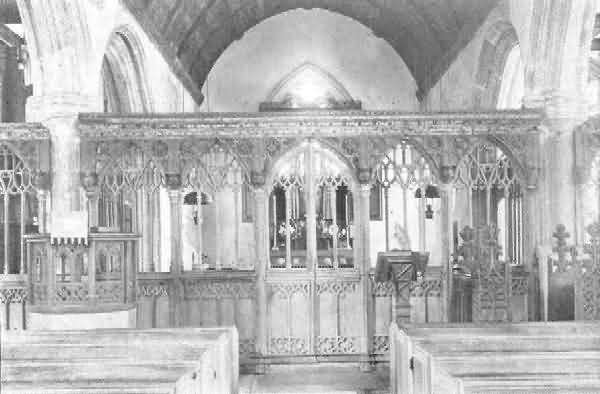
Ilsington: Rood Screen
«Some Old Devon Churches»:
Index; 133-144
[Dr. R. Peters: rpeters@wissensdrang.com]